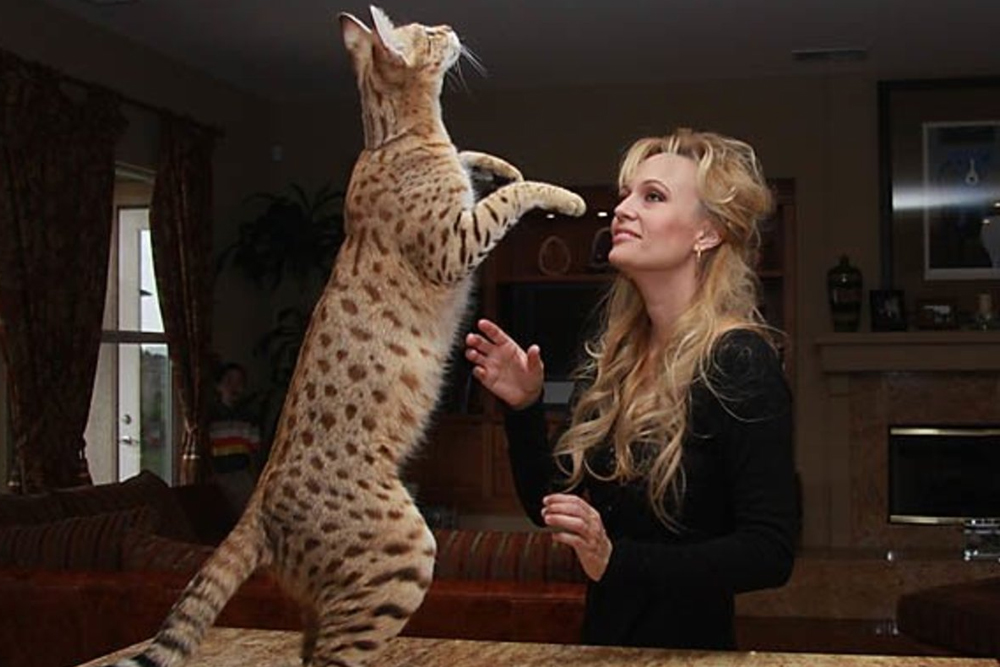Discover the secrets of 10 unusual exotic pets

When it comes to pet animals, most people think of cats and dogs as the main options. However, for some, the allure of owning an exotic pet is irresistible. These unique creatures can be a fascinating addition to a household, offering companionship, entertainment, and a touch of the extraordinary. In this article, we will explore 10 curious facts about the most popular exotic pet animals, shedding light on their unique characteristics and behaviors.
1. Capybaras: The World’s Largest Rodents
Native to South America, capybaras are the largest rodents in the world, weighing up to 150 pounds. Despite their impressive size, they are social and docile creatures. Capybaras are semi-aquatic and require access to water for swimming and cooling off. A fun fact is that they can hold their breath for up to five minutes underwater!
Related articles
1- Treat Your Pet Like Family: 10 Fun Activities to Do Together
2- Keep Your Pet Healthy and Happy with Regular Veterinary Check-ups
3- How to Keep Your Pets Mind Sharp with Unique Games and Foods!
4- From Fat to Fit: Home Exercises for Your Obese Pet
2. Bearded Dragons: Prolific Head-Bobbers
Bearded dragons, native to Australia, are popular reptile pets due to their friendly and laid-back nature. One intriguing behavior they exhibit is head-bobbing. This can be a form of communication, with rapid head-bobbing signaling dominance, while slow head-bobbing indicates submission. Bearded dragons also wave their arms as a sign of submission or recognition.
3. Fennec Foxes: Nocturnal Desert Dwellers
The fennec fox, native to North Africa, is the smallest member of the canid family. With their large ears and fluffy tails, they have become popular exotic pets. These ears not only help them locate prey underground but also dissipate heat, keeping the fox cool in the desert climate. Fennec foxes are omnivores and are known to consume a varied diet, including insects, small mammals, and plant matter.
4. Sugar Gliders: Nature’s Pocket-Sized Parachutists
Sugar gliders are small marsupials native to Australia, New Guinea, and the surrounding islands. They are named after their preference for sweet nectar and their ability to glide through the air using a membrane called the patagium. This membrane stretches from their wrists to their ankles, allowing sugar gliders to travel up to 150 feet in a single glide. They are highly social animals, and it’s essential to keep them in pairs or groups to prevent loneliness.
5. Axolotls: Masters of Regeneration
Axolotls are a species of salamander native to Mexico. They are unique in that they exhibit neoteny, which means they retain their larval features, such as external gills, throughout their entire lives. Axolotls are capable of regenerating lost body parts, including limbs, gills, and even parts of their brain and spinal cord. This extraordinary ability is due to the presence of a specialized type of cell called a blastema.
6. Hedgehogs: Ball of Quills with a Keen Sense of Smell
Hedgehogs are small mammals known for their distinctive spiny coats. These spines are modified hairs made of keratin, the same material as human hair and nails. Hedgehogs have a keen sense of smell, which they rely on to locate food in the wild. They are also known for a unique behavior called self-anointing, where they spread their own saliva over their spines after encountering new scents.
7. Tarantulas: Gentle Giants with Impressive Lifespans
Despite their intimidating appearance, many tarantula species are docile and make fascinating pets. These large spiders can live for quite a long time, with females of some species reaching up to 20 years of age. Tarantulas molt their exoskeleton to grow, and during this process, they can also regenerate lost limbs.
8. Chinchillas: Fluffiest of Rodents with the Densest Fur
Chinchillas are small rodents native to the Andes Mountains in South America. They are known for their incredibly soft and dense fur, which helps them stay warm in their high-altitude habitat. In fact, their fur is so dense that it makes them resistant to fleas and other parasites. Chinchillas take dust baths to keep their fur clean and dry, as water can damage their delicate coat.
9. Skunks: Scented Mammals with a Powerful Defense Mechanism
Skunks, native to North and South America, are known for their distinctive black and white coloration and their potent defense mechanism. When threatened, skunks can spray a foul-smelling liquid from glands near their tail. Domesticated skunks often have their scent glands removed, making them safe and odor-free pets. Skunks are omnivores, consuming a varied diet that includes insects, small mammals, fruits, and vegetables.
10. Kinkajous: Rainforest Dwellers with PrehensileTails
Kinkajous, also known as honey bears, are native to the rainforests of Central and South America. These nocturnal creatures are related to raccoons and have a prehensile tail that functions like a fifth limb. They use this tail for balance and to grasp branches as they navigate the treetops. Kinkajous have a specialized tongue that allows them to extract nectar from flowers, giving them their sweet nickname.
In conclusion, the world of exotic pets is vast and full of fascinating creatures, each with their unique characteristics and behaviors. From the impressive size of the capybara to the extraordinary regenerative abilities of the axolotl, these animals offer a glimpse into the diverse and often surprising world of nature. If you’re considering adding an exotic pet to your family, it’s important to thoroughly research their specific care requirements and ensure you can provide a suitable environment for them to thrive. With proper care, these exotic animals can become beloved companions and a source of endless fascination.
Sobre o Autor




0 Comentários